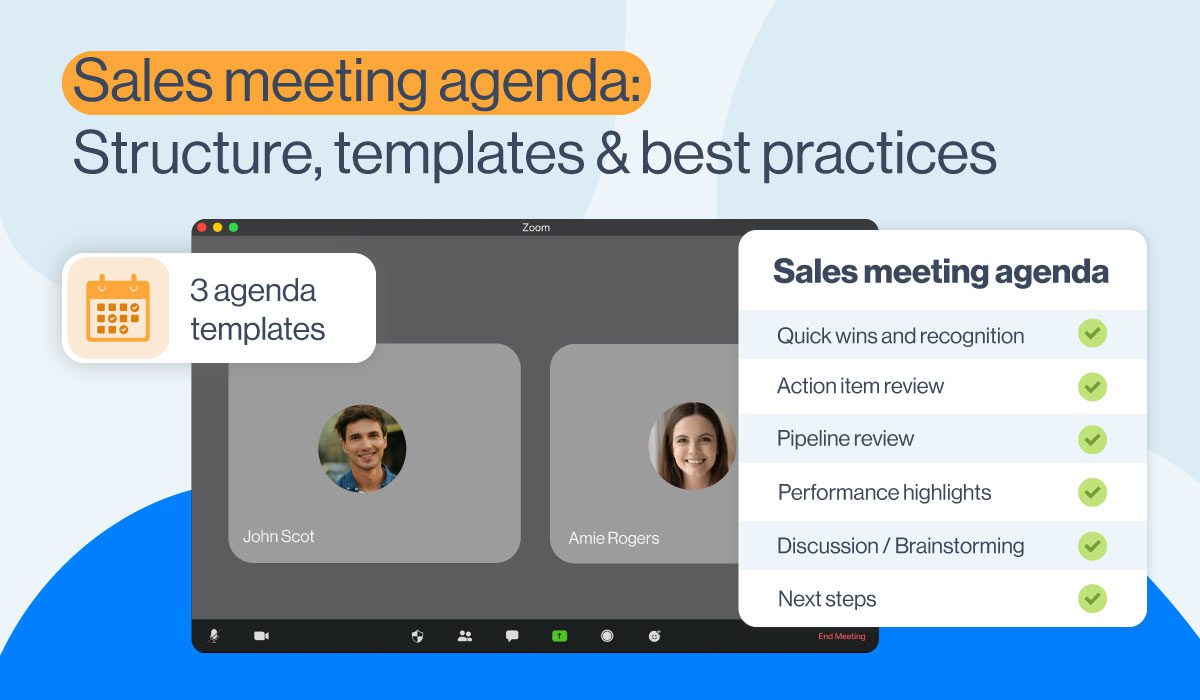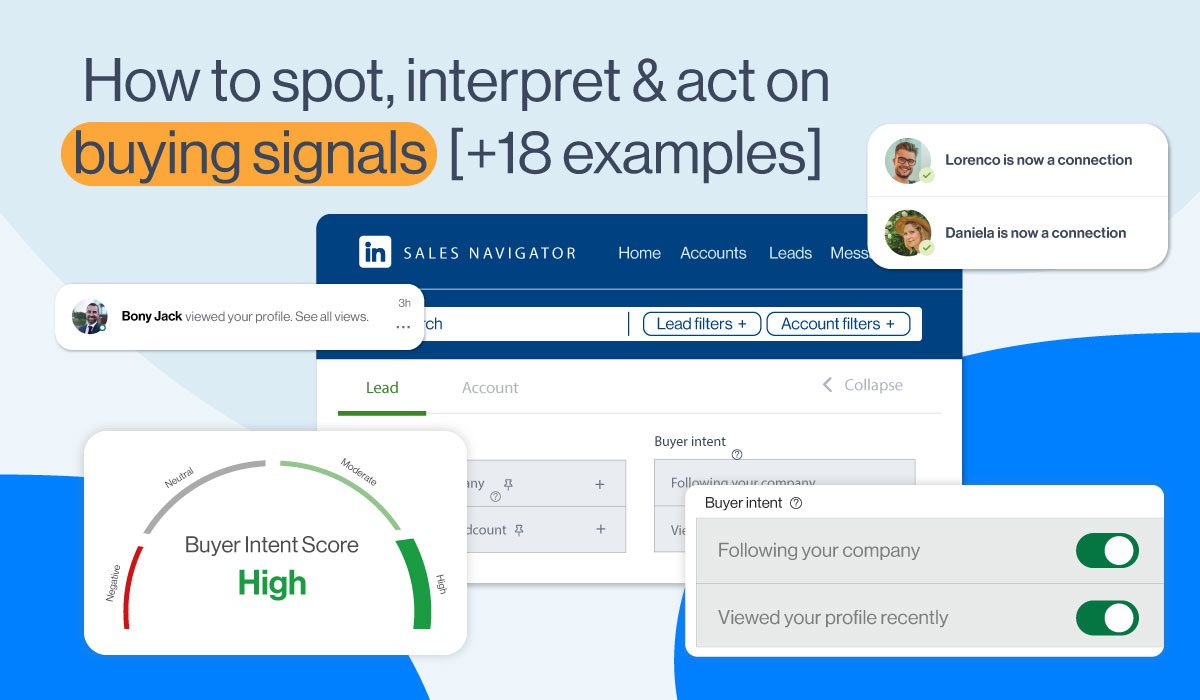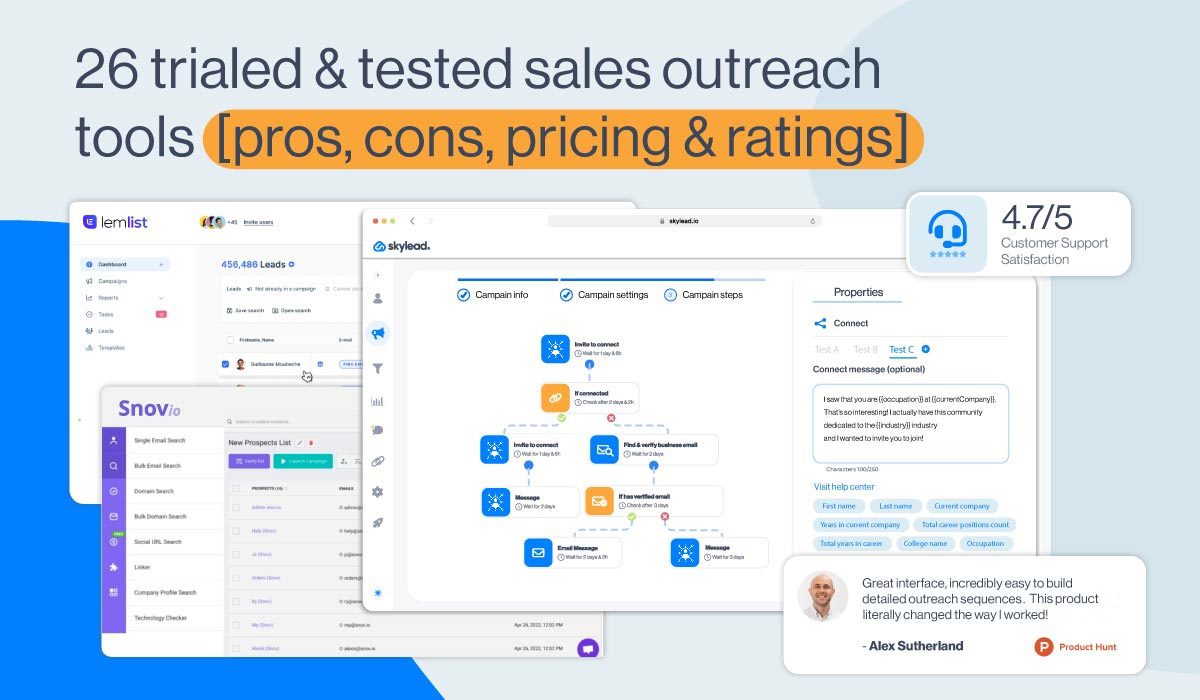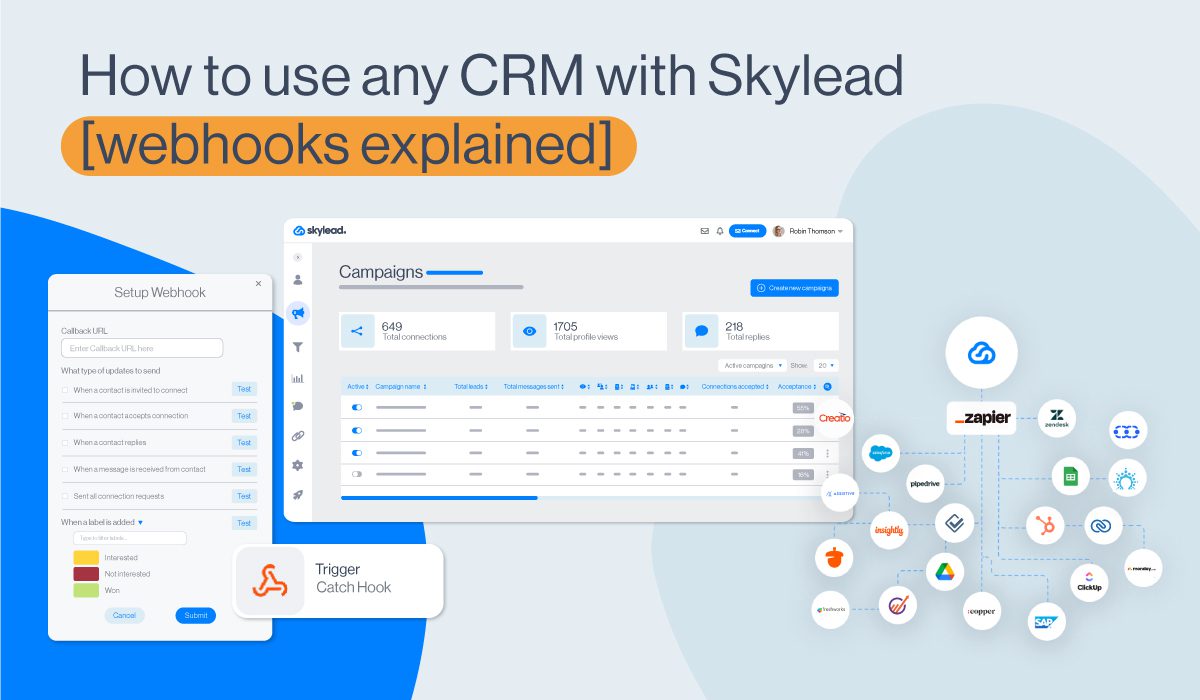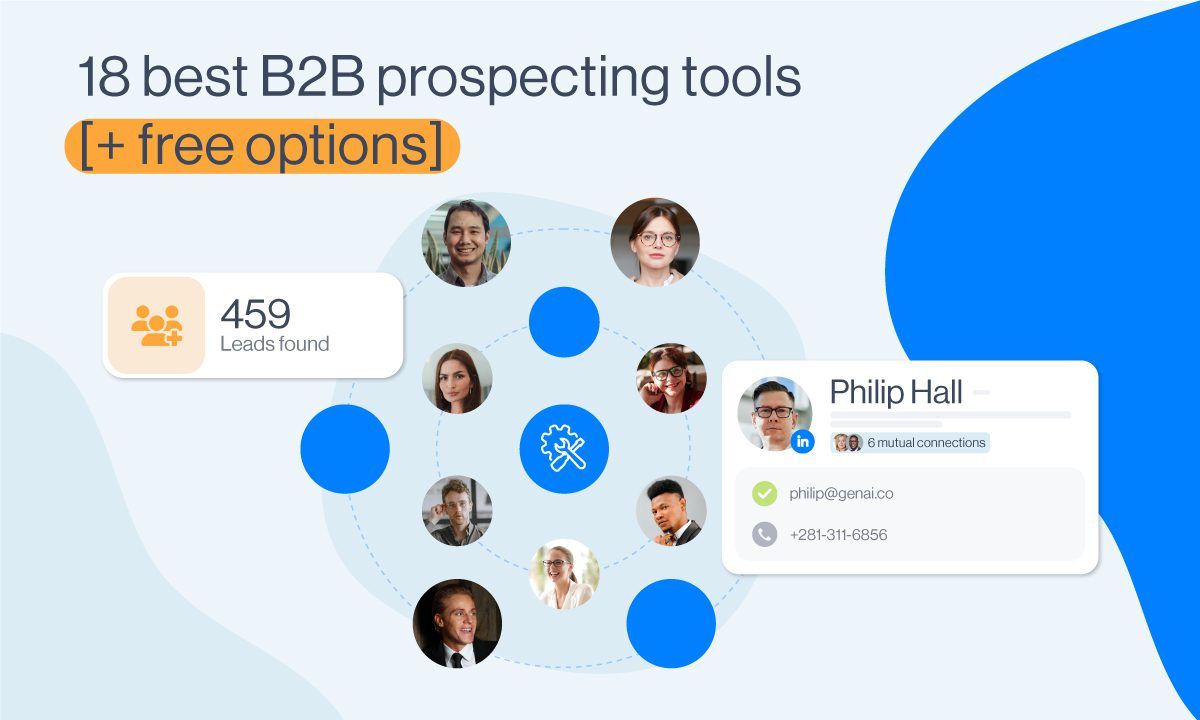What is sales engagement? [2026 guide]
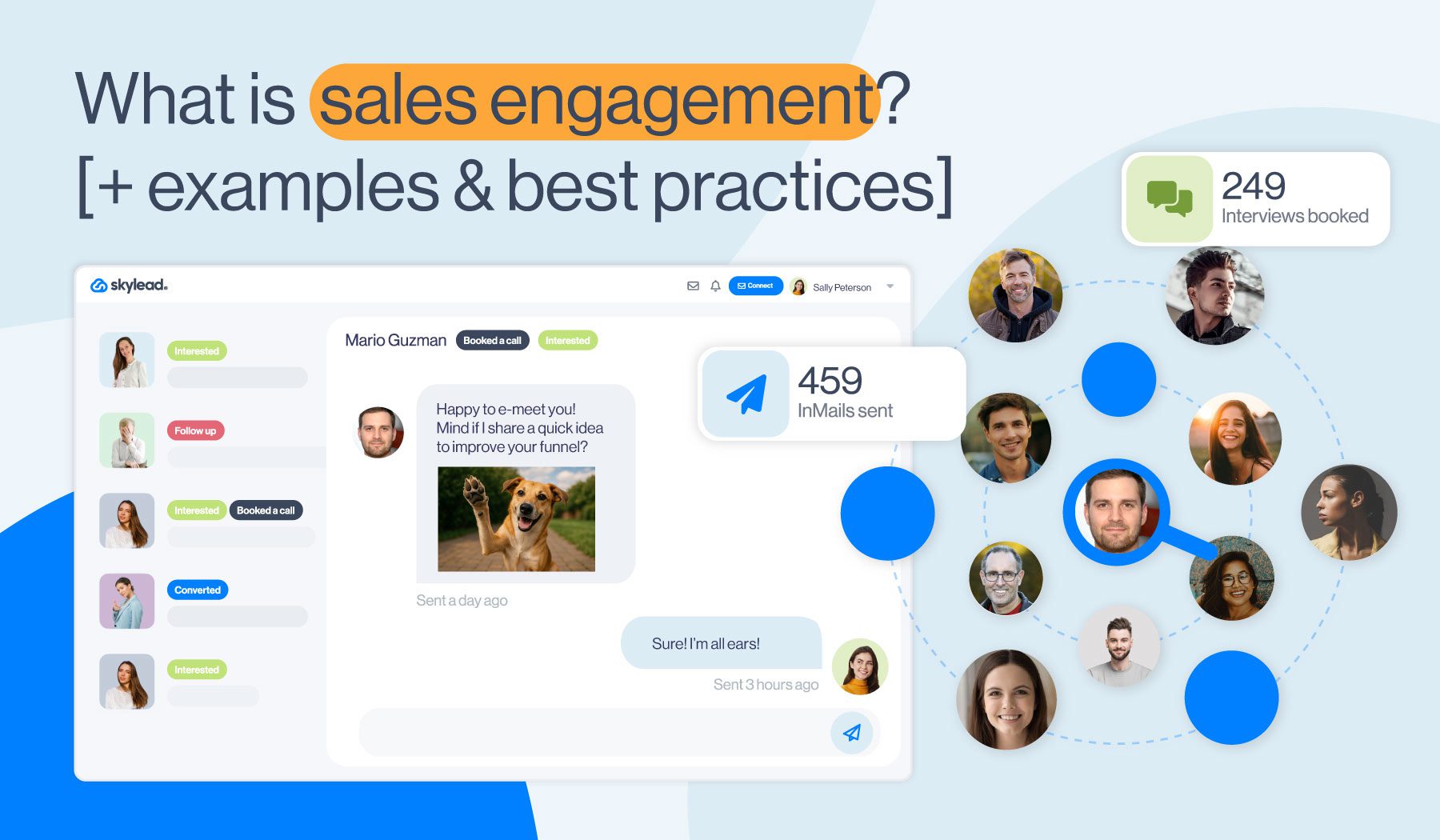
What is sales engagement? It's the system behind every successful deal.
In 2026, it's not enough to just reach out - sales engagement is how modern salespeople plan, personalize, and scale their interactions across every channel. It’s what turns cold leads into warm conversations, and warm conversations into signed contracts.
This guide breaks down the what, why, and how of sales engagement - complete with real examples, actionable best practices, and the tool that helps you run everything smoothly. Spoiler alert: it’s Skylead. 😉
What is sales engagement?
Sales engagement is the process of managing and optimizing all interactions between a salesperson and a prospect throughout the buyer’s journey. Think emails, social media messages, calls, demos, follow-ups, basically every touchpoint that moves a lead closer to a deal.
However, it would be naive to assume that sales engagement is related to conversations only. Rather, it’s the system behind it - the strategy that defines how, when, and where you reach out, and the technology that helps you do it at scale.
Why is sales engagement important?
Short answer: because attention is a valuable resource, and wasting it costs you revenue.
Every day, your prospects dodge dozens of emails, screen unknown numbers, and scroll past outreach messages they didn't ask for. So, if you're relying on chance to get a response, sorry to break it to you, but you're not selling. You're gambling.
If you want to get through, you need coordinated, well-timed, and personalized outreach across the right channels.
And that? It’s exactly what sales engagement enables!
When executed well, it helps you:
- Break through the noise. By aligning your outreach to the buyer’s context and not your quota, sales engagement lets you reach prospects in ways that feel timely, relevant, and human.
- Close the follow-up gap. Most reps, 48% to be precise, give up after a single interaction with the prospect. But most deals require 8 touchpoints to close. That said, a strong engagement process keeps you consistent and persistent, so good leads don’t go to waste just because someone forgot to send a follow-up email after no response.
- Move faster with less work. Did you know that, on average, reps spend only 28% of their time actually selling? The rest of the time goes to repetitive tasks, such as logging activity, scheduling, and chasing replies. The sales engagement process, or rather, the tools used in it, allow them to automate these low-value activities, saving them 11+ hours a week in the meantime. That is time better spent nurturing leads!
- Optimize every step of the journey. Speaking of tools, thanks to them, you can track replies, opens, clicks, conversations, and more. This allows you to get real-time feedback on what’s working (and what isn’t) across outreach sequences, channels, and messaging.
- Build a system that scales. With a proper sales engagement process in place, you aren’t going with the gut-feeling outreach and hoping for the best. Rather, you’re running a strategy that’s trackable, repeatable, and aligned across the entire sales team, so every rep - new or experienced - takes the page out of the same winning playbook.
So, what is sales engagement? It’s the operating system behind modern sales tactics. But the reason it’s so important is because it’s THE thing that makes your outreach scalable, your messaging smarter, and the entire sales team more consistent.
Different types of sales engagement [+ examples]
Sales engagement is a coordinated series of touchpoints across different channels and stages of the sales journey. Depending on your industry, audience, and offer, your engagement strategy might look a little different.
But at its core, it includes the following types:
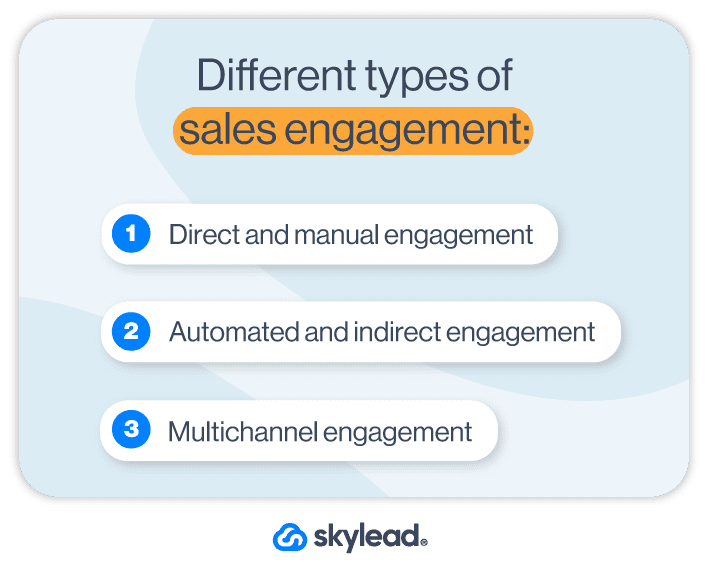
1. Direct and manual engagement
These are hands-on, human-driven interactions that typically happen in real time or are highly personalized. While they don’t scale as easily, they build trust faster and drive deeper conversations.
Examples include:
- Phone calls - Live, one-on-one conversations with prospects.
- Personalized emails - Writing custom emails based on the recipient’s role, company, or trigger event.
- Meetings - Hosting discovery calls, demos, or coffee chats (virtual or in-person).
- Live product demos - Walking a prospect through the solution in real time.
- Live chat - Answering questions via a chat widget on your site.
- Direct mail - Sending physical letters, handwritten notes, or creative packages.
- Social media engagement - Commenting, DMing, or tagging prospects in hopes of starting a conversation on social media platforms.
2. Automated and indirect engagement
These touchpoints are triggered by behavior or buying signals, and while less personal, they’re important for staying consistent and saving time.
Typical examples are:
- Automated email sequences - Pre-built cadences personalized with dynamic variables (e.g., name, company, pain point).
- Chatbots - Automated website interactions that qualify leads or answer FAQs.
- Lead capture forms - Website forms that route leads into a nurture or sales sequence.
These may not feel personal at first glance, but when done well, they allow reps to deliver the right message at the right time, without being in 10 places at once.
3. Multichannel engagement
People respond to different channels at different times. Some ignore their inbox but check LinkedIn daily. Others won’t reply to an email, but they will answer a call if they’ve seen your name before.
The tricky part is you won’t always know which channel your prospect prefers right away. And guessing wrong means your message gets ignored, even if your offer is solid.
That’s why, in our opinion, multichannel sales engagement is the most reliable approach.
Here’s what that might look like in practice:
- Day 1: Send a personalized email introducing yourself and the reason for reaching out.
- Day 2: View their LinkedIn profile (yes, people check who viewed them).
- Day 3: Send a connection request with a personalized note.
- Day 5: Send a LinkedIn follow-up message referencing your email.
- Day 8: Send a second email, this time offering a quick value point or resource.
- Day 11: Drop a voice or video message via LinkedIn for a more personal touch.
Sales engagement vs. sales enablement
So, you know what sales engagement is. But how does it differ from sales enablement? Or are they the same thing?
Not exactly, though they often work hand in hand.
Here’s the simplest way we’d put it:
- Sales enablement equips your team with what they need to sell.
- Sales engagement activates that knowledge.
Enablement gives you the what - think content, training, playbooks, Ideal Customer Profile(s) (ICP), Buyer Persona(s), objection handling templates, etc. Engagement is the how - the actual execution of your cold outreach across email, LinkedIn, calls, and beyond.
Without enablement, your reps might not know what to say. Without engagement, they might know what to say… but there’s no one to hear it.
Long story short, sales enablement prepares reps for conversations, whereas sales engagement makes sure those conversations lead somewhere.
You need both. But they solve different problems.
What is pre-sales engagement?
Pre-sales engagement refers to everything that happens before you reach out to a prospect.
It’s the prep work that sets your sales engagement efforts up for success. In other words, it’s the research, analysis, and qualification that makes sure when you do make contact, it’s actually relevant.
Common pre-sales engagement activities include:
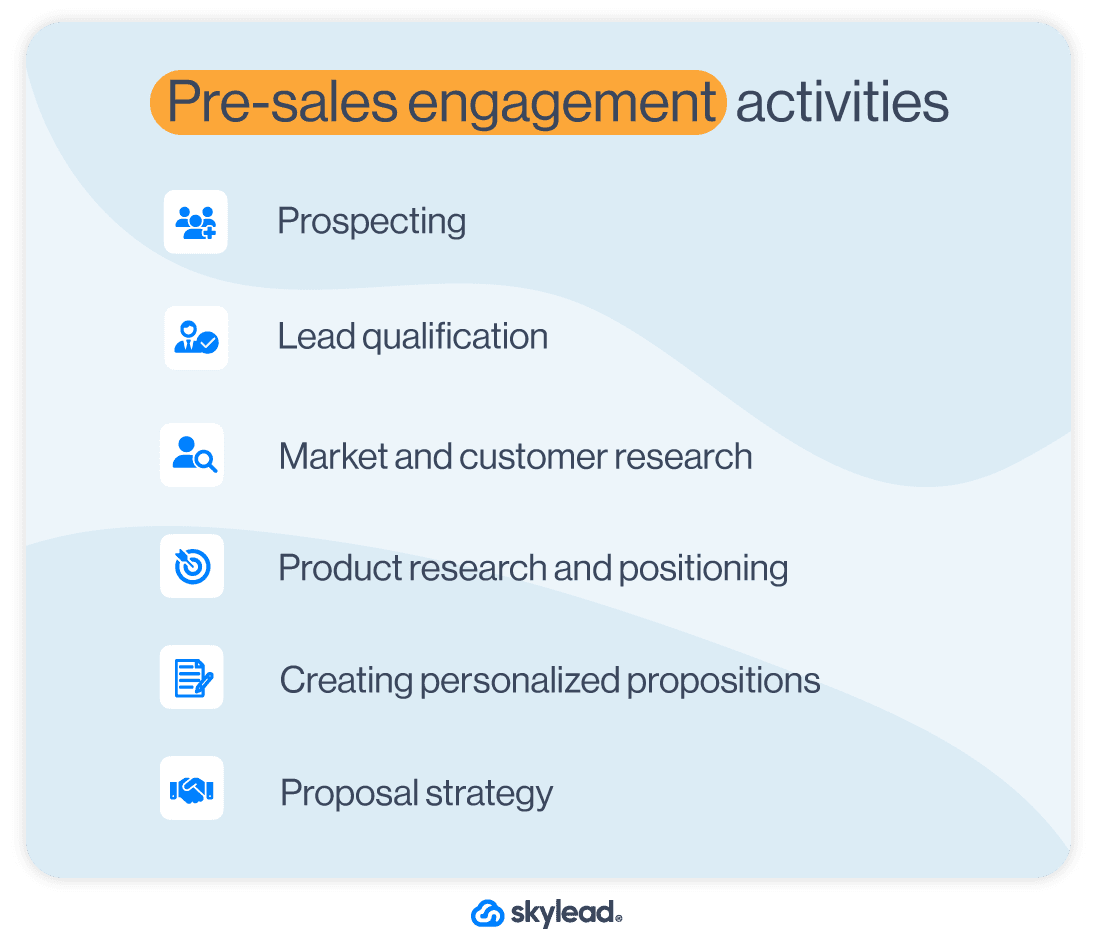
- Prospecting - Finding potential buyers that match your ideal customer profile. Most salespeople rely on LinkedIn prospecting at this stage, as the platform is home to over 1 billion professionals across 200 territories.
- Lead qualification - Making sure they’re actually a fit before engaging in lead generation.
- Market and customer research - Understanding the context your lead operates in.
- Product research and positioning - Adjusting your offer so it aligns with their needs.
- Creating personalized propositions - Drafting angles and messages that will resonate.
- Proposal strategy - Prepping potential deal structures or solutions ahead of time.
It’s simple, really. The better your pre-sales engagement, the better (and easier) your sales engagement process becomes.
Sales engagement best practices
Sales engagement takes great planning, testing, and refinement to master.
And while every company’s process will look slightly different, there are a few best practices that separate good sales engagement from bad sales engagement.
Here’s what you want to focus on:
1. Optimize your interactions
Every interaction counts. It doesn't matter if you're handling inbound leads or reaching out cold.
That begs the question: how do you make them count?
If we're talking inbound, it's all about responding fast, showing you've done your homework, and meeting the buyer where they are in their journey - not where you wish they were. If they're still exploring, don’t pitch. If they’re ready, don’t stall.
For outbound, relevance and clarity are the most important aspects. The best reps know how to hook attention in the first sentence and then lead with value. They don’t write emails for the sake of writing, but to start a conversation.
At the end of the day, every message should have a purpose. And that purpose should be obvious to the prospect, not just to you.
2. Choose the appropriate communication channels
Not every channel is created equal. Not to mention, not every prospect wants to hear from you in the same way.
Some skim messages on their phone. Others prefer detailed emails they can forward to business decision-makers. Some reply fastest to a LinkedIn message, while others won’t engage unless there’s a calendar invite in the mix. The point is: how you reach out matters just as much as what you say.
That’s why we recommend going multichannel from the start. It gives you multiple chances to get on your prospect’s radar and figure out which touchpoint actually triggers a response. Plus, it keeps you from putting all your effort into a single channel that might not even work.
3. Leverage a sales engagement tool to boost efficiency
We live in a tech-first world. You can’t expect to run a high-performing sales engagement strategy by juggling spreadsheets and sticky notes.
The best reps automate tasks, and it pays off. Several sources say that sales automation saves reps over 6 hours per week on manual work, such as updating CRM and organizing notes, with our own research bringing it closer to 11 hours. It also helps improve conversions by 20%.
With that being said, it's clear that, if you want your efforts to pay off, your best bet is to rely on technology - specifically, sales engagement software.
This type of tool allows you to:
- Automate lead generation
- Create multichannel outreach sequences
- Personalize your outreach
- A/B test your messaging
- Track opens, clicks, replies, and conversions in real time
…and thus, stay consistent, even when you’re managing 100+ leads.
Now, how do you choose the right one?
Your ideal sales engagement software should:
- Support multichannel outreach
- Include hyper-personalization options
- Provide real-time performance analytics
- Integrate with your CRM (or replace it entirely)
- Be easy enough to use without a lengthy onboarding process
Lucky for you, Skylead checks all these boxes, and then some!

It’s THE sales engagement tool that sales professionals use to save 11+ hours each week and book 3 times more meetings.
From day one, we let you build Smart sequences - adaptive multichannel outreach flows built around if/else logic. These sequences help you respond to prospect actions in real time, depending on what they do (or don’t do). While at you, you can split test up to 5 message variations, use pre-defined or custom variables for personalization, and then get detailed performance data across each step in your sequence.
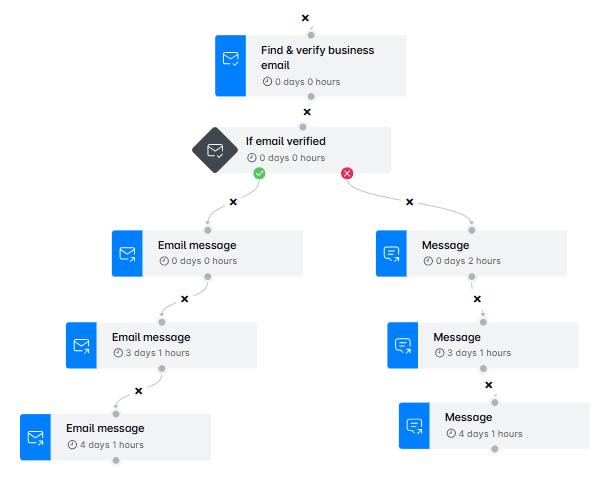
Need to scale your email outreach? No problem! Namely, Skylead lets you connect unlimited mailboxes to help you send tens of thousands of emails a month at no extra cost. It even auto-rotates between them to keep your outreach flowing with no interruptions, and includes an infinite email warm-up to maintain deliverability. There’s no need to hunt for emails either, as the tool can find and verify emails for you as part of your sequence.
And when you want to go beyond plain text, use Skylead’s Image and GIF personalization feature to embed your prospect’s name, photo, logo, or custom text into visuals, and thus, boost your reply rate by up to 76%.
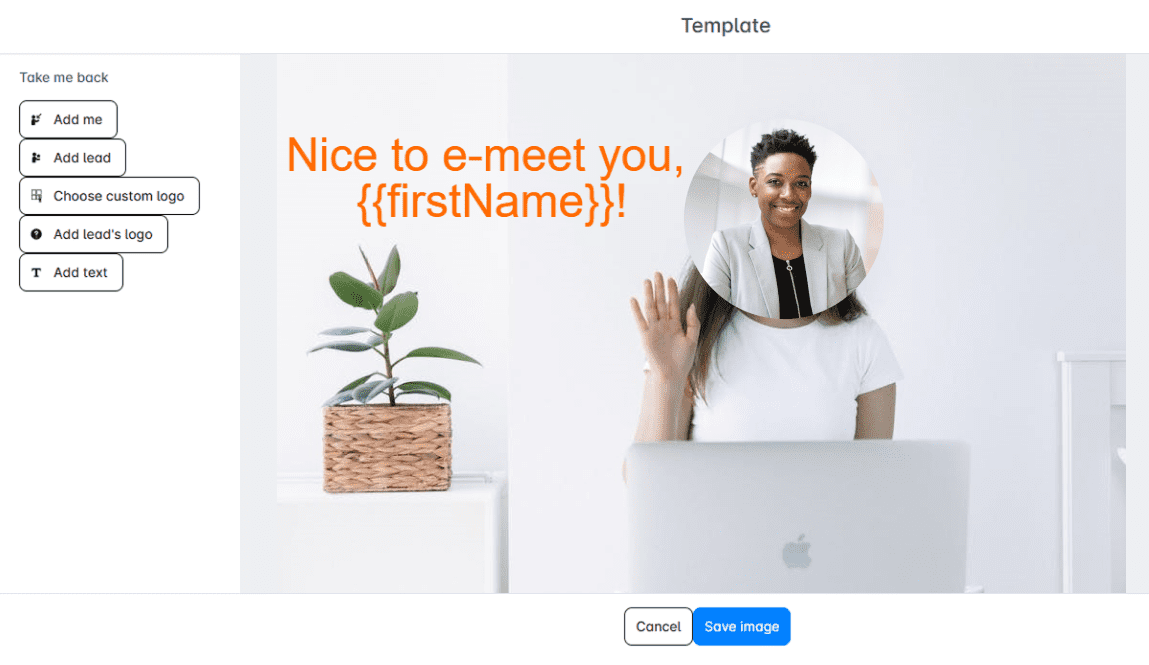
This sales engagement tool also includes a Smart inbox that you can use to manage all your correspondence and, thus, track conversions and ROI.
Not to mention, it integrates with the best sales CRM.
The best thing is, you can get all of this for just $100 a month. No extra costs included.
Interested? Your 7-day free trial is just a click away!
4. Monitor and measure your engagement metrics
Now, not all sales engagement efforts will provide the same results. But the thing is, you can’t improve what you don’t measure. It’s that simple.
And that’s why you need to track the right sales engagement metrics. They help you spot bottlenecks, double down on what’s working, and recover deals before they fall completely off the track.
Here are some of the main metrics we recommend keeping an eye on:
- Reply rate - The percentage of prospects who respond to your messages, whether emails, LinkedIn cold messages, X DMs, etc. It’s one of the clearest signals that your messages are landing (or not).
- Open rate - How many people opened your email. This can help you gauge the effectiveness of your email subject lines or timing.
- Click-through rate (CTR) - The percentage of recipients who clicked a link in your message. It’s especially useful for determining if there’s enough interest in what you’re offering.
- Positive reply rate - Not all replies are created equal. This metric focuses on interested responses only, such as meeting requests, referrals, and qualified questions, among others.
- Touchpoints per deal - How many interactions it takes to move a lead through the pipeline. This helps you understand how persistent you need to be.
- Time to first response - How quickly leads are replying after the initial message. Shorter equals better.
- Meetings booked - The number of qualified prospects who agree to a sales call, demo, discovery session, etc. You can also track which sequence or channel drove the booking, so you know where to invest more time and resources.
5. Stay flexible and open to adjustment
No matter how comprehensive your process is, sales engagement isn’t static. Buyer behavior evolves. Channels come in and go out of style. And what worked last quarter? It might just not work now!
So, test often. Stay curious. And don’t treat your sequences like finished novels - treat them for what they are, drafts.
The best teams iterate. That’s how they stay relevant.
Frequently asked questions
What does sales engagement mean?
Sales engagement is the process of managing and optimizing every interaction between a salesperson and a prospect across the entire sales journey. This includes how you reach out, when you follow up, and the tools you use to maintain consistency and scalability. Done right, sales engagement helps you stay relevant, increase reply rates, and close more deals.
What is an example of a sales engagement?
An example of sales engagement is a multichannel outreach sequence that includes personalized emails, LinkedIn actions, and follow-ups over time. For example, a rep might email a prospect on Day 1, view their profile the next day, send a connection request with a custom note, then follow up with a message referencing the original email. Later, they might share a resource or send a quick video message.
How is sales engagement different from CRM?
The main difference between sales engagement and CRM is that a CRM keeps all your prospect data in one place, while sales engagement helps you act on it. In other words, while CRMs are designed to store data, track pipeline stages, and manage records, sales engagement processes help reps plan, execute, and optimize real-time outreach across one or more channels.
Your sales engagement process is only as good as the tool that powers it
If you want real conversations - the kind that turn into closed deals - you can’t just wing it. You need structure. You need speed. And you need a sales engagement process that actually works.
But merely knowing what is sales engagement isn’t enough. You need an engine to power it all. A sales engagement tool, if you will.
Luckily, we’ve got just what the doctor ordered: Skylead.
It’s the tool to use when you want to scale your outreach, personalize every touchpoint, and book 3x more meetings in less time.
Ready to see it in action? Start your 7-day free trial now and watch what happens when your strategy meets the right software!





